Naukasana, also known as the Boat Pose, is a powerful and dynamic yoga posture that engages the core muscles and requires balance, strength, and focus. The name comes from the Sanskrit words “nauka” meaning “boat” and “asana” meaning “pose.” When performing this pose, the body resembles the shape of a boat, with the arms, legs, and torso forming a “V.”
How to Perform Naukasana (Boat Pose)
- Starting Position:
- Sit on your yoga mat with your legs extended straight in front of you.
- Keep your spine straight and your arms resting beside your body.
- Engage the Core:
- Slowly lean back slightly, ensuring your spine remains straight.
- Lift your legs off the floor, keeping them straight or slightly bent at the knees if necessary.
- As you lift your legs, simultaneously raise your arms to reach towards your feet, parallel to the floor.
- Form the Pose:
- Balance your body on your sit bones, with your torso and legs forming a “V” shape.
- Keep your arms parallel to the floor, fingers extended, and gaze forward.
- Engage your core muscles to maintain balance and stability.
- Hold the Pose:
- Breathe deeply and hold the pose for 10-20 seconds, or longer if comfortable.
- Focus on maintaining a strong core and steady breath.
- Release:
- To release the pose, lower your legs and arms back to the starting position.
- Rest and breathe before repeating the pose if desired.
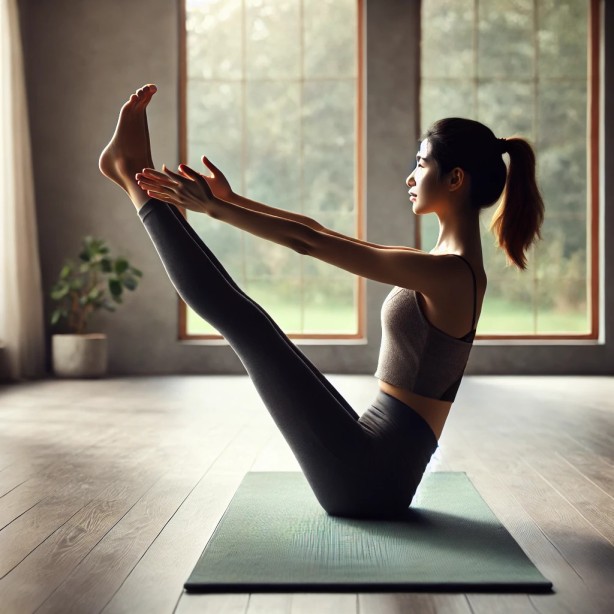
Tips for Practicing Naukasana
- Engage Your Core: The key to maintaining balance in Naukasana is engaging your core muscles. Imagine pulling your navel towards your spine.
- Focus on Your Breath: Deep, controlled breathing will help you hold the pose longer and with more stability.
- Start Slow: If you’re new to Naukasana, start by holding the pose for a few seconds and gradually increase the duration as your strength improves.
- Modify if Needed: If you find it challenging to keep your legs straight, you can bend your knees slightly until you build more strength and flexibility.
Benefits of Naukasana (Boat Pose)
Naukasana offers a wide range of physical and mental benefits:
- Strengthens Core Muscles: The pose primarily targets the abdominal muscles, helping to tone and strengthen the core.
- Improves Balance and Stability: Maintaining the “V” shape requires balance, enhancing your overall stability.
- Tones Arms and Legs: The extended arms and lifted legs work the muscles in the arms, thighs, and hips.
- Enhances Digestion: The engagement of abdominal muscles stimulates digestive organs, improving digestion.
- Reduces Belly Fat: Regular practice can help burn belly fat and tone the midsection.
- Increases Concentration: Balancing in this pose requires mental focus, improving concentration and mental clarity.
- Boosts Energy Levels: Naukasana is an energizing pose that can help combat fatigue and increase vitality.
Precautions and Contraindications
While Naukasana is beneficial for many, it’s important to be mindful of the following:
- Avoid if Pregnant: This pose is not recommended during pregnancy due to the strain it can place on the abdomen.
- Be Cautious with Back or Neck Pain: If you have a history of back or neck pain, practice with caution and consider modifying the pose.
- Don’t Overexert: Listen to your body and avoid pushing yourself too hard, especially if you’re new to this pose.
Common Mistakes to Avoid
- Rounding the Back: Keep your spine straight and avoid slumping or rounding your back.
- Holding Your Breath: Maintain steady, deep breathing throughout the pose.
- Tension in the Neck: Keep your neck relaxed and avoid straining.
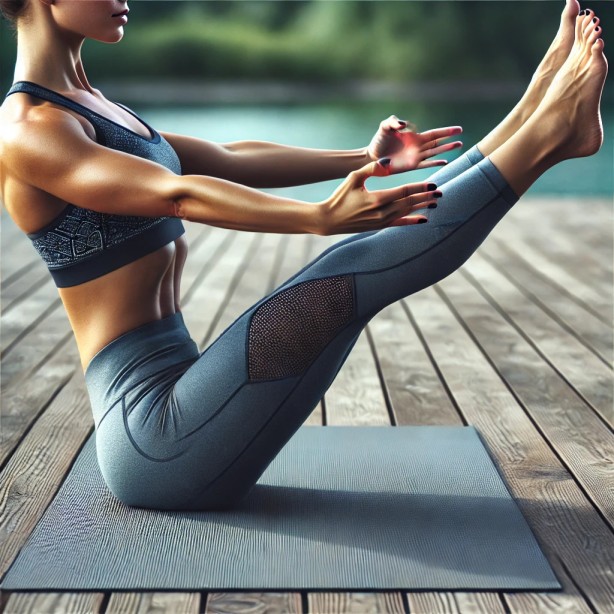
Variations of Naukasana
For those looking to explore different aspects of the Boat Pose, consider the following variations:
- Ardha Naukasana (Half Boat Pose):
- In this variation, only the legs or torso is lifted, making it less intense and more accessible to beginners.
- Paripurna Naukasana (Full Boat Pose):
- For a more challenging version, try lifting the legs higher and bringing the torso closer to the thighs.
- Dynamic Naukasana:
- Add a dynamic element by moving from the Boat Pose into a low boat (hovering close to the floor) and back, engaging the core even more.
Steps to Perform Naukasana (Boat Pose)
- Starting Position:
- Sit on your mat with your legs extended straight in front of you. Keep your spine straight and your arms resting beside your body.
- Engage Your Core:
- Lean back slightly while keeping your spine straight. Engage your core muscles to maintain stability.
- Lift Your Legs:
- Slowly lift your legs off the floor, keeping them straight or slightly bent at the knees if needed. Aim to have your legs parallel to the floor.
- Raise Your Arms:
- Extend your arms forward, parallel to the floor, reaching towards your feet. Keep your arms active and engaged.
- Form the Pose:
- Balance your body on your sit bones, with your torso and legs forming a “V” shape. Keep your chest open and gaze forward.
- Hold the Pose:
- Breathe deeply and hold the pose for 10-20 seconds, or as long as you can maintain stability and comfort.
- Release:
- To exit the pose, lower your legs and arms back to the starting position. Rest briefly before repeating the pose if desired.
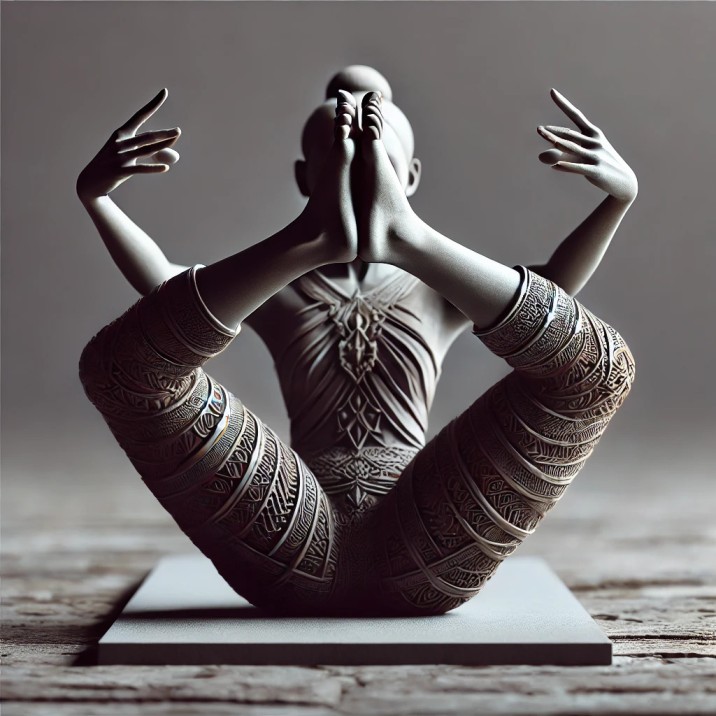
- To exit the pose, lower your legs and arms back to the starting position. Rest briefly before repeating the pose if desired.
Tips for Practicing Naukasana (Boat Pose)
- Engage Your Core:
- The key to maintaining balance in Naukasana is engaging your core muscles. Pull your navel towards your spine to stabilize your torso.
- Focus on Your Breath:
- Maintain steady, deep breathing throughout the pose. Avoid holding your breath, as it can increase tension and affect balance.
- Start Slowly:
- If you are new to Naukasana, begin by holding the pose for a few seconds and gradually increase the duration as your strength and endurance improve.
- Modify if Needed:
- If you find it challenging to keep your legs straight, you can bend your knees slightly. As you build strength, work towards straightening your legs.
- Keep Your Back Straight:
- Avoid rounding your back. Maintain a straight spine to prevent strain and to ensure proper alignment.
- Relax Your Neck:
- Keep your neck relaxed and avoid straining. Your gaze should be forward, not upward, to prevent neck tension.
- Use Props:
- If needed, you can use a yoga block or bolster under your sit bones to provide additional support and make the pose more accessible.
- Listen to Your Body:
- Pay attention to your body’s signals. If you experience discomfort or strain, adjust your position or take a break.
- Incorporate Variations:
- Explore variations such as Ardha Naukasana (Half Boat Pose) or Dynamic Naukasana to build strength and flexibility progressively.
- Practice Consistently:
- Regular practice will help improve your ability to hold the pose and increase its benefits over time. Aim to include Naukasana in your routine 2-3 times per week.
By following these steps and tips, you can effectively incorporate Naukasana into your yoga practice and reap its many benefits for both body and mind.
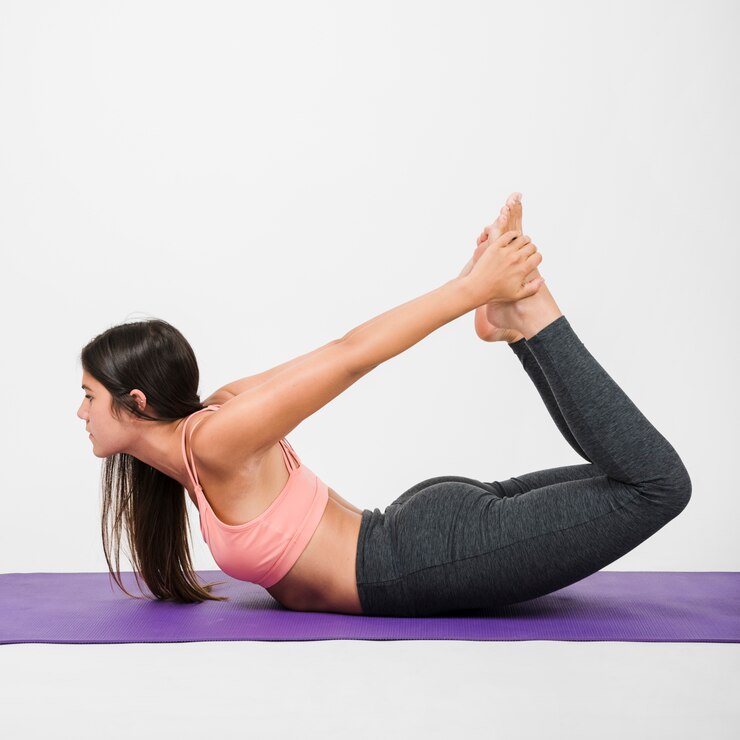
Conclusion
Naukasana, or Boat Pose, is a versatile and effective yoga posture that builds core strength, improves balance, and enhances overall well-being. Whether you’re looking to tone your midsection, improve your concentration, or boost your energy levels, Naukasana is a powerful addition to any yoga practice. As with any pose, remember to practice with mindfulness and listen to your body, adjusting the pose as needed to suit your level and goals.
FAQ on Naukasana (Boat Pose): Benefits, Steps & Tips
1. What is Naukasana (Boat Pose)?
Naukasana, or Boat Pose, is a yoga posture that resembles the shape of a boat. It involves balancing on your sit bones with your legs and torso lifted to form a “V” shape. This pose is known for its ability to strengthen the core and improve overall stability.
2. What are the primary benefits of Naukasana?
- Strengthens Core Muscles: Engages and tones the abdominal muscles, including the rectus abdominis and obliques.
- Improves Balance and Stability: Enhances your ability to balance and stabilize the body.
- Tones Arms and Legs: Strengthens the arms, thighs, and hips.
- Enhances Digestion: Stimulates digestive organs and aids in digestion.
- Reduces Belly Fat: Helps in burning fat around the midsection.
- Increases Concentration: Requires mental focus and improves concentration.
- Boosts Energy Levels: Provides an energizing effect and combats fatigue.
- Supports Cardiovascular Health: Offers a cardiovascular workout that benefits heart health.
- Improves Posture: Encourages proper alignment and better posture.
- Enhances Flexibility: Stretches the hip flexors, hamstrings, and lower back.
3. How do I perform Naukasana (Boat Pose)?
- Starting Position: Sit on your mat with your legs extended straight in front of you and your spine straight.
- Engage Your Core: Lean back slightly, keeping your spine straight, and engage your core muscles.
- Lift Your Legs: Raise your legs off the floor, keeping them straight or slightly bent if necessary.
- Raise Your Arms: Extend your arms forward, parallel to the floor, reaching towards your feet.
- Form the Pose: Balance on your sit bones with your torso and legs forming a “V” shape. Keep your chest open and gaze forward.
- Hold the Pose: Breathe deeply and hold for 10-20 seconds.
- Release: Lower your legs and arms back to the starting position and rest.
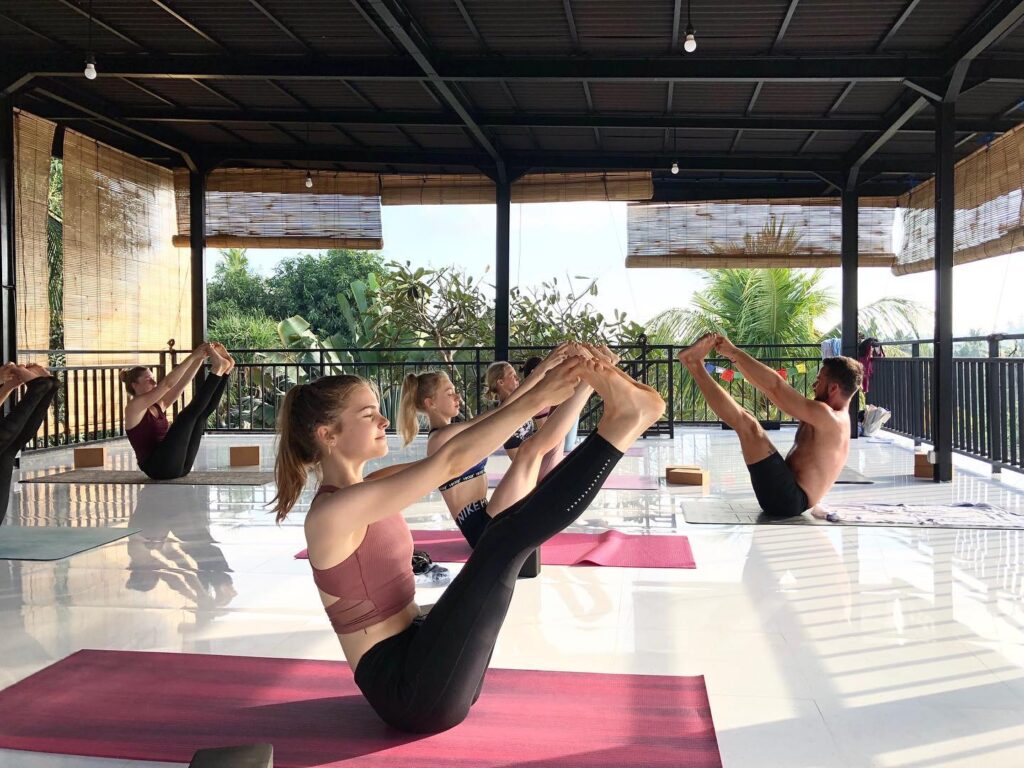
4. What are some tips for practicing Naukasana effectively?
- Engage Your Core: Pull your navel towards your spine to stabilize your torso.
- Focus on Your Breath: Breathe deeply and avoid holding your breath.
- Start Slowly: Begin with a few seconds and gradually increase as you build strength.
- Modify if Needed: Bend your knees if you find it challenging to keep your legs straight.
- Keep Your Back Straight: Maintain a straight spine to avoid strain.
- Relax Your Neck: Keep your neck relaxed and gaze forward.
- Use Props: Consider using a yoga block or bolster for additional support if needed.
- Listen to Your Body: Adjust your position or take breaks if you feel discomfort.
- Incorporate Variations: Try different variations to enhance strength and flexibility.
- Practice Consistently: Aim to include Naukasana in your routine 2-3 times per week for best results.
5. Who should avoid Naukasana?
- Pregnant Individuals: Avoid Naukasana during pregnancy due to abdominal strain.
- Those with Back or Neck Pain: If you have a history of back or neck issues, modify the pose or consult with a yoga instructor.
- People with Recent Surgery: Avoid the pose if you have had recent abdominal or hip surgery until fully recovered.
6. Can Naukasana help with weight loss?
Yes, Naukasana can contribute to weight loss by engaging and toning the abdominal muscles, helping to burn fat around the midsection. However, it should be combined with a balanced diet and overall exercise routine for effective weight loss.
7. How long should I hold Naukasana?
Start by holding Naukasana for 10-20 seconds. As you become more comfortable and build strength, you can gradually increase the duration. Aim to hold the pose for up to 30 seconds to 1 minute if possible.
8. Can I practice Naukasana if I’m a beginner?
Yes, Naukasana can be adapted for beginners. Start with modifications, such as bending the knees or using a support under your sit bones. As you gain strength and flexibility, you can progress to the full pose.
9. What are some common mistakes to avoid in Naukasana?
- Rounding the Back: Maintain a straight spine to prevent strain.
- Holding the Breath: Breathe deeply and continuously throughout the pose.
- Tension in the Neck: Keep your neck relaxed and avoid looking up or straining.
10. How can I incorporate Naukasana into my yoga practice?
Include Naukasana in your routine by practicing it 2-3 times per week. It can be part of a core-strengthening sequence or included in a balanced yoga practice. Use variations and modifications to match your skill level and goals.


 Nederlands
Nederlands English
English Français
Français Deutsch
Deutsch हिन्दी
हिन्दी Bahasa Indonesia
Bahasa Indonesia Italiano
Italiano Português
Português Русский
Русский Español
Español